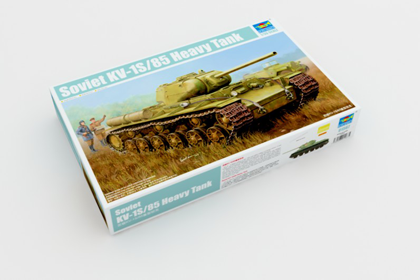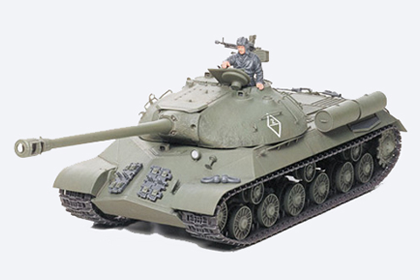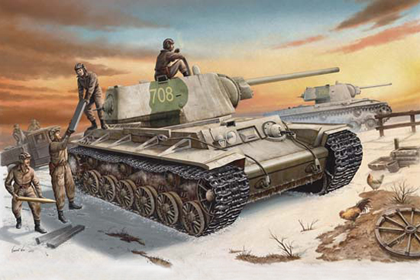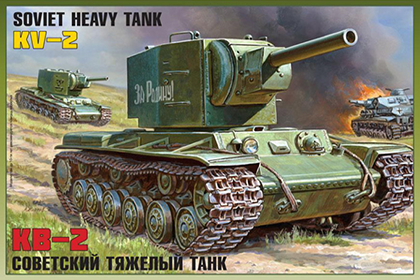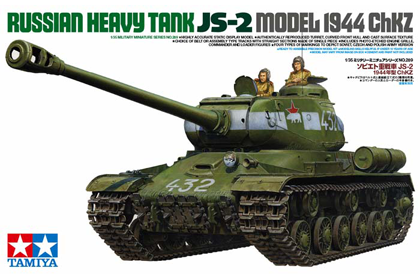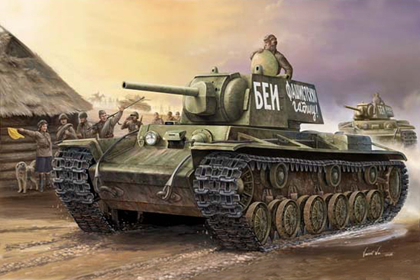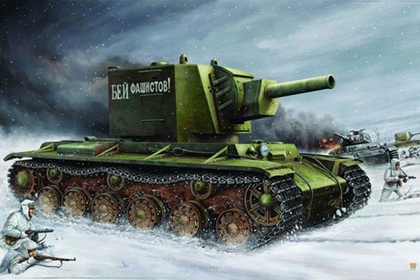This is the Tamiya 35 066-1600 kit in 1/35 scale, of the ‘Russian Heavy Tank, KV-1 Type C’.
The name KV, were the initials of Klim Voroshilov. Klim was a Soviet hero who did a great job back in the Russian Civil War (at least that is what Soviet propagandists sell). Between the wars he spent his time pointing the big finger at his comrades so that Stalin had plenty of cannon fodder for his purges. His value as a Marshal during WW2 was less than spectacular. He was quickly replaced on the front line and spent the remainder of the war reviewing parade troops. This rather dim witted Marshal was probably under qualified to even do that.
When first introduced in late 1930’s, the KVI was no doubt one of the most powerful tanks in the world, and a complete secret. It was built to be completely “bulletproof”, and was shot proof against the 37mm Anti-Tank Gun with it’s thick 100mm armor.
In the B-model, armor was increased an additional 25-35mm. The C-model used a cast turret, replacing the old plated one to increase protection.
This heavy tank, weighing around 45 tons with crew of five, was armed with 76.2mm main gun and two MGs. The armament was considered heavy for 1940, but by 1943 the main gun lacked punching power against new Panthers and Tigers. Its weight caused constant trouble with the transmission. As weight increased due to additional armor, the engine power was not increased. This caused successive models to become slower.
